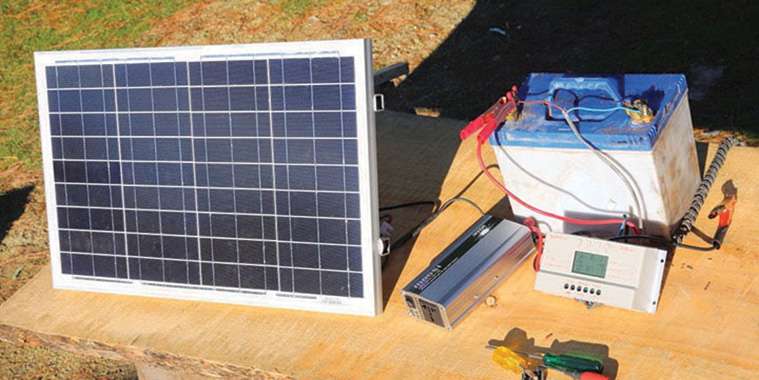Before I talk about how to build a simple solar power collector, we should consider what is the most viable photovoltaic (PV) system for people living in Manitoba.
There are two main types of solar PV arrays. The most basic and least expensive is an off-grid apparatus made of easily available components. The most complex and costly is an on-grid system, requiring a large solar array to produce sufficient electricity to supply all the requirements of, say, a 2,000 square foot residential dwelling, with two adults and two children.
After researching recent large-scale solar installations in Manitoba — we have the second lowest kilowatt-per-hour rate in Canada at about 8.7 cents — it is my opinion that on-grid technology is not cost-effective here without a substantial government subsidy such as Manitoba Hydro’s $1 per watt incentive. Unfortunately, this generous rebate program ended on May 1, 2018 and will not be replaced until a newly conceived Crown corporation called Manitoba Efficiency considers the pros and cons of “green” energy in the province. However, a modest off-grid system located in a remote area without access to Hydro is an eco-friendly, cost-effective alternative to operate, for example, a string of lights without recourse to a petroleum generator, at least during the summer.
DIYers can create their own small photovoltaic (PV) solar systems by purchasing a 1.3 kW kit from a big box building outlet for about $2,800, taxes not included. The kit includes panels, a charge controller, DC to AC inverter, a battery pack, cables and mounting brackets. In peak summer sunlight hours in Manitoba, a 1.3 kW array will produce about 4 kWh (kWh is the number of watts x 1,000 consumed in one hour) or enough electricity to power a 100-watt bulb for approximately 40 hours.
A less expensive DIY alternative is to create a custom-made I.3 kW, 12-volt solar PV collector by separately purchasing new or second hand parts.
Cheaper panels are not necessarily inferior to those costing two to three times more; in fact, research data showed that a $99 panel produced about 20 percent more current than a $300 panel of comparable size.
A new charge controller can be purchased from Amazon for about $90 versus $295 for a similar device from a solar equipment provider.
The least expensive DC to AC power inverter I could find was listed on eBay for about $170, though I suspect cheaper ones are available.
Twelve-volt auto batteries connected in parallel are acceptable storage receptacles for small PV collectors; deep cycle marine batteries have thicker plates and will last longer but are more expensive.
The amperage of 12-volt batteries (expressed as cold cranking amps) can vary without affecting the batteries or the performance of the solar array.
A source of inexpensive lead acid batteries is an auto wrecker that dismantles vehicles in reasonable condition and resells the parts. (Test a used battery by charging it overnight and then check its output with a voltmeter. The meter should read about 12.6 volts, and the battery should be capable of maintaining the charge.)
Once you have assembled all the parts required to build your solar panel, start your project by attaching the positive and negative leads from the panels to similar poles located on the charge controller.
For maximum efficiency, use 4-gauge wire for the leads from the controller to the battery array.
The batteries should be connected in parallel with 4-gauge wire with crimps or acceptable connectors. (You can save money by purchasing the wire and crimps separately and then using a hammer crimper to make your own cables.)
Finally, connect the positive and negative wires from battery array to the appropriate poles on the DC to AC inverter; plug in a lamp to the female receptacle and say, “Let there be light.”
For maximum efficiency, your panels should face south, set at 45-degrees to the horizon and not be shaded by trees or shrubs.
If your panels are attached to your roof, then adjusting them to the optimum 45-degree pitch may be impossible or require the panels to have pivoting brackets.
In the winter, your panels must be cleared of snow buildup if you expect them to produce any power. This is a major problem for large rooftop arrays, especially when we experience early or late snowfalls during months like October and March, times when we receive sufficient sunshine to contribute to the cost-efficiency of photovoltaic systems.
davidsquare81@yahoo.com



